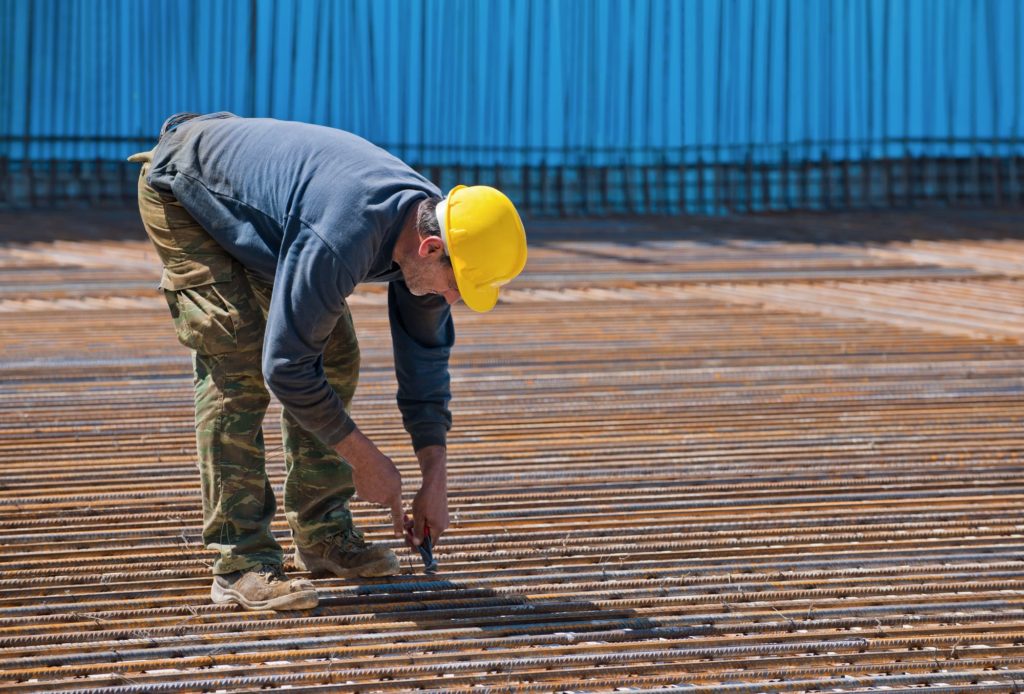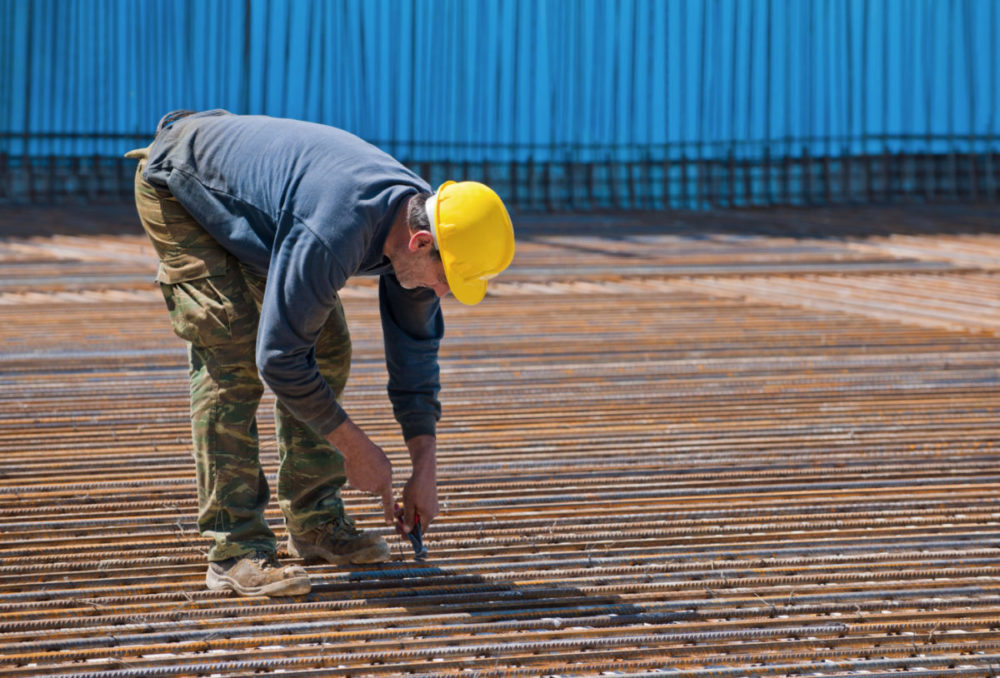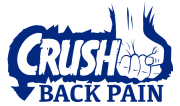Causes of Lower back pain when bending over and how to fix them
Lower back pain when bending over is mechanical in nature 80-90% of the time. This simply means that the movement of bending over increases the pain because of increased stress, strain, or compression through the tissues of the lower back. Most lower back pain has a strong bio-mechanical component.

If movement or positioning change the pain then the lower back pain has a mechanical component. An inflammatory component is often present as well. Mechanical deformation and irritation of lower back muscles, discs, and nerves results in inflammation. Decreasing the loads through the lower back tissues and improving movement and mobility aid in decreasing inflammation.
This article will focus on the most common causes of lower back pain when bending over and the best ways to correct the bio-mechanical part of the puzzle.
Causes of lower back pain when bending over
Muscle strain
The simple muscle strain is pretty straightforward. If you’ve been lifting or moving furniture or doing some type of activity out of your regular routine and wake up the next day with a stiff, sore back it’s probably just a muscle strain.
The good news is muscles heal, fairly quickly too. Don’t make the mistake of lying around and taking it easy if you have a muscle strain. To heal, muscles need blood via increased circulation. Sitting or lying around decreases blood flow to the lower back muscles, increasing the amount of time a muscle strain takes to heal.
Following a short period of resting the lower back, the best thing you can do if you have a lower back muscle strain is to move. Staying active and mobile forces the lower back muscles to contract and work. This increases blood flow, by default. Muscle contraction and increased blood flow facilitates the healing process.
You’ll also notice that stiffness and soreness decrease with movement and activity.
Gentle core stabilization exercises and walking are your best bets. Avoid stretching the lower back muscles with an acute strain. While this usually feels good for a short time it won’t help the muscles heal faster and may in fact exacerbate the strain. Imagine a frayed rubber band. Stretching the rubber band pulls the frayed areas apart more and increases the fraying. A strained muscle occurs when excessive tensile forces cause tearing and rupture of the myofibers (muscle fibers) at a microscopic level. Stretching imparts a tensile force through the muscle, resulting in more tearing at the myofiber level.
So save the stretching until the pain subsides and you have full mobility. Only then can a gentle stretching program be initiated.
Hypermobility, instability catch
Hypermobility is just a fancy term for too much movement. An instability catch is a result of too much movement (hypermobility). If you get a quick “catch” and sharp pain when bending forward or when standing back up from bending forward it’s likely due to hyper mobility.
The sharp pain that occurs while bending forward or coming back up is due to the vertebral motion segment (bone, disc, bone and corresponding facet joints) moving into and past end-range. The sharp pain can be related to the disc, facet joints, tendons, ligaments, etc. Several pain generators could be present at one time.
With hypermobility or an instability catch it is most effective to focus on controlling excessive motion during the movement, bending in over in this case, opposed to focusing on whatever tissue or tissues may or may not be pain generators.
The abdominal brace and hip hinge stabilize the lumbar spine, checking excessive motion while bending forward.
Employing these two simple movement strategies usually alleviates lower back pain when bending over completely or decreases the pain by 80-90%. Especially after working on it for a week or so.
Herniated or bulging disc
Lower back pain when bending over may be the result of a herniated or bulging disc. The posterior (back) part of the disc is innervated. Bending forward increases forces through the back part of the disc, where the nerves are. If your symptoms are related to a bulging or herniated disc, bending forward has the potential to increase the pain.
If the lower back pain when bending over is disc related sitting usually increases the symptoms also. Standing, walking, and just being in an upright position usually feel best.
If lower back pain when bending over is coming from a disc the prone press-up exercise is the best place to start. Walking and weighted walking work very well for disc related lower back pain.
How to fix lower back pain when bending over
If it’s a muscle strain
- Rest for four days to allow the healing tissue to gain enough strength to withstand contractions and movement without restraining the muscle. Don’t rest more than four days. Longer periods of immobility can be just, if not more detrimental to the healing process than starting to exercise the muscle too soon. Rest does NOT mean bed rest. Still move around, walk, and do things. Just be careful to avoid excessive use of the lower back muscles. Don’t go moving a couch or pulling weeds.
- After four days of taking it easy start gentle exercises that contract the lower back muscles without excessive movement through the spine.
- Core stabilization exercises like these are a great place to start. The exercises outlined will work the entire trunk with minimal force through the lumbar spine. If the volume is too high just cut the reps by half.
- Simple walking is the most underrated exercise there is for lower back pain. If you’re not ready for core stabilization exercises, start with walking and progress to the stabilization work.
If it’s hypermobility, instability
- The back and trunk muscles need to be used as a built in the back belt to stabilize the lumbar spine during movement and activity. The abdominal brace does the trick.
- Motion at the lumbar spine needs to be minimized while motion at the hips is maximized. This decreases the forces through the discs, joints, muscles, and nerves of the lower back. Less forces through these tissues means less mechanical irritation and less inflammation, leading to decreased pain. The hip hinge needs to be the go to motion pattern when bending over.
- Lumbar stabilization training is the next step. This 6 week lumbar stabilization program takes out all the guesswork and keeps it simple.
If it’s a herniated or bulging disc
- Limit early morning lumbar flexion. The discs have more fluid in them when your first wake up. More fluid means more pressure. Bending forward and sitting increase the pressure on herniated and bulging discs, especially after you first get up. Limit flexion for the first hour after you wake up to reduce pressure on disc herniations and bulges. This facilitates the healing process and decreases pain.
- Use the hip hinge when bending forward. This minimizes forces through the posterolateral portion of the disc, where herniations and bulges occur.
- This 6 week herniated disc program facilitates the healing process, decreases pain, and strengthens the trunk and hip girdle musculature.
When to see a medical professional
- The pain is constant and not affected by movement or positioning. The pain may not be mechanical and could require further medical work up.
- Bowel and/or bladder incontinence is present.
- Obvious weakness in one or both legs.
- Lower back pain is accompanied by a fever.
FAQS
Lower back pain when bending over is usually the result of one of three issues. A muscle strain, hypermobility/instability catch, or a bulging disc. Lower back pain when bending over can be eliminated completely or at the very least decreased substantially by applying a few simple movement tweaks.
Abdominal bracing and hip hinging stabilize the lower back while reducing forces through the discs, joints, and soft tissue. Just learning and applying the hip hinge and abdominal brace every time you bend over will automatically decrease lower back pain. Core stabilization training will also improve lower back stability and decrease pain with bending over.
This is likely the result of excessive motion into flexion of one or more lumbar segments. When you bend over your lumbar spine flexes. If it moves too far into flexion pain is often felt.
Abdominal bracing and hip hinging when bending forward stabilize the lumbar spine and decrease stress/strain/force through the lumbar tissues. Incorporating the abdominal brace and hip hinge will immediately reduce lower back pain when bending over.
A lumbar stabilization program will also help decrease these types of symptoms.
When bending over and sitting increase lower back pain the likely culprit is the disc. To reduce disc related pain focus on three methods proven to decrease pain caused by a disc.
1. Limit early morning lumbar flexion.
2. Hip hinge when sitting, standing, and bending forward.
3. Complete an exercise program designed specifically for bulging and herniated discs.
This is likely the result of excessive motion into flexion of one or more lumbar segments. When you bend over your lumbar spine flexes. If it moves too far into flexion pain is often felt.
Abdominal bracing and hip hinging when bending forward stabilize the lumbar spine and decrease stress/strain/force through the lumbar tissues. Incorporating the abdominal brace and hip hinge will immediately reduce lower back pain when bending over.
A lumbar stabilization program will also help decrease these types of symptoms.



